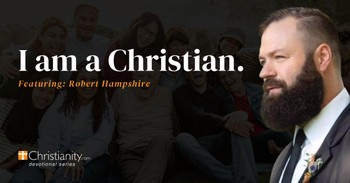"Moses said, ‘The Lord God will raise up for you a prophet like me from your brothers. You shall listen to him in whatever he tells you." (Acts 3:22)
Other than Jesus, Moses might be the most well-known character from the Bible. Moses is a key figure in Christianity, known for his role as a prophet, lawgiver, and leader in the Bible. His life, marked by divine encounters and miracles, raises many questions among Christians about his relationship with God and his significance in foreshadowing Christ. This article seeks to explore these questions, shedding light on Moses' impact on Christian faith and teachings.
Moses in the Bible: Table of Contents
The Prophet Moses
Let’s look at ten things about Moses – who he was in the Bible and some details regarding his life.
Was Moses Hebrew?
Yes. He was born to Jochebed and Amram, both from the tribe of Levi, when the children of Israel lived in Egypt as slaves. He was the youngest of three children, with a sister named Miriam and a brother named Aaron. He is considered Israelite
When Was Moses Born?
Moses is believed to have been born around the 14th to 13th century BCE, although the exact date is not known. The traditional date given for his birth is 1393 BCE, but this is based on various interpretations of biblical chronology.
At this time, the Pharaoh was afraid of the Israelite slaves because there were so many of them and ordered all the boy babies to be killed. Moses mother protected him. “She saw that he was a special baby and kept him hidden for three months” (Exodus 2:2).
When she couldn’t hide him anymore, she made a little boat, placed him in it, and hid baby Moses in the reeds on the banks of the Nile River. He didn’t stay there long before being rescued by the Pharaoh’s daughter. Being unable to nurse him, she hired a Hebrew woman to do the job. This woman just so happened to be Moses’ mother.
After Moses was weaned, the Pharaoh’s daughter raised him in the palace surrounded by all the luxuries of Egypt.
Was Moses a Murderer?
Yes. He grew up in the palace but knew he was a Hebrew. When Moses saw an Egyptian beating a Hebrew slave the Bible says, “Looking this way and that and seeing no one, he killed the Egyptian and hid him in the sand” (Exodus 2:12).
Not the greatest coverup because the next day, a Hebrew slave called him out on it.
"The next day he went out and saw two Hebrews fighting. He asked the one in the wrong, “Why are you hitting your fellow Hebrew?” The man said, “Who made you ruler and judge over us? Are you thinking of killing me as you killed the Egyptian?” Then Moses was afraid and thought, “What I did must have become known.” (Exodus 2:13-14)
What Did the Burning Bush Mean to Moses?
Exodus 3:1-6 describes a miraculous phenomenon where Moses encounters a bush that is on fire but is not consumed by the flames. This occurs when Moses is tending the flock of his father-in-law, Jethro, near Mount Horeb (also known as Mount Sinai).
As Moses approaches the burning bush, God calls out to him from within the bush and instructs him to remove his sandals, as the ground he is standing on is holy. God then reveals Himself to Moses and commissions him to return to Egypt to lead the Israelites out of slavery and into the Promised Land.
The burning bush was a pivotal moment in Moses' life and had profound significance for him
It represented Moses' first direct encounter with God. The burning bush was a manifestation of God's presence, marking a turning point in Moses' life and setting him on a path of leadership and prophethood.
What Were the 10 Plagues of Moses?
The Ten Plagues of Egypt, as described in the Book of Exodus in the Bible, were a series of calamities that God inflicted upon Egypt to persuade Pharaoh to release the Israelites from slavery. These plagues were:
Water Turned to Blood (Exodus 7:14-25): The Nile River and all water sources in Egypt turned into blood, killing fish and making the water undrinkable.
Frogs (Exodus 8:1-15): A massive infestation of frogs emerged from the rivers and waterways, covering the land and entering homes and buildings.
Lice or Gnats (Exodus 8:16-19): The dust of the land turned into lice or gnats, afflicting people and animals with irritating bites and infestations.
Flies (Exodus 8:20-32): Swarms of flies invaded Egyptian houses and lands, causing widespread discomfort and disease.
Livestock Disease (Exodus 9:1-7): A severe epidemic struck the Egyptian livestock, including horses, donkeys, camels, cattle, sheep, and goats, killing vast numbers of animals.
Boils (Exodus 9:8-12): Painful boils and sores afflicted both humans and animals throughout Egypt.
Hail (Exodus 9:13-35): A devastating hailstorm, accompanied by thunder and lightning, destroyed crops and properties and killed people and animals in the open fields.
Locusts (Exodus 10:1-20): A massive swarm of locusts covered the land, devouring all remaining crops and vegetation, leading to severe famine.
Darkness (Exodus 10:21-29): A thick darkness enveloped Egypt for three days, making it impossible to see or move about.
Death of the Firstborn (Exodus 11:1-10, 12:29-30): The final plague was the sudden death of all firstborn children and animals in Egyptian households, sparing only those of the Israelites who followed God's instructions to mark their doorposts with lamb's blood.
What Important Things Did Moses Do?
God recruited his brother Aaron to assist in overcoming Moses' fear, promising to help them both. Moses rose to the challenge. He led the Israelites out of Egypt through the long story of the ten plagues and the Pharaoh’s opposition.
When trapped between the Pharaoh—who’d changed his mind and pursued the newly freed slaves—and the Red Sea, Moses told the people, “Do not be afraid. Stand firm and you will see the deliverance the LORD will bring you today” (Exodus 14:13).
He also prophesied, “The Egyptians you see today you will never see again…” (Exodus 14:13), and he was right. Moses led them through the Red Sea on dry ground by the power of the God. That was just the beginning of Moses’ courageous leadership.
What Did God Call Moses To in the Bible?
The job God called Moses to do was full of difficulties and challenges. Moses never hid his emotions and questions from God. They spent 40 days together on top of Mount Sinai and God gave Moses “…the two tablets of the covenant law, the tablets of stone inscribed by the finger of God”(Exodus 31:18).
Meanwhile, the people got tired of waiting for Moses, made an idol, and started worshiping it. This made God angry, and He offered to kill them all, making Moses into a great nation instead. “But Moses sought the favor of the LORD his God”(Exodus 32:11).God heard Moses and didn’t act on His emotions.
In response to Moses’ request to see God’s glory, he saw parts of God no one ever had before. “And he passed in front of Moses, proclaiming, ‘The LORD, the LORD, the compassionate and gracious God, slow to anger, abounding in love and faithfulness, maintaining love to thousands, and forgiving wickedness, rebellion and sin…’” (Exodus 34:6-7).
For 40 years, Moses led the Israelites, and God kept His promise to always be with him. Even when Moses messed up, due to his anger, which disallowed him from entering the promised land. The Bible says Moses “whom the LORD knew face to face”(Deuteronomy 34:10).
Who Did Moses Marry?
Moses married Zipporah, the daughter of Jethro, a Midianite priest. This is mentioned in the Book of Exodus in the Hebrew Bible and the Old Testament of the Christian Bible. Their marriage is first recorded in Exodus 2:21.
After fleeing Egypt to escape retribution for killing an Egyptian, Moses traveled to the land of Midian. There, he came to the aid of Jethro's daughters, who were being harassed by shepherds while trying to draw water for their flock. Moses defended them and helped water their flock. In gratitude, Jethro, also known as Reuel, invited Moses to stay with him. Moses agreed and eventually married Zipporah, one of Jethro's daughters.
When and How Did Moses Die?
God was with Moses to the very end, burying him in secret. Moses lived to be 120 years old and was completely healthy. “…his eyes were not weak, nor his strength gone”(Deuteronomy 34:7). The people grieved for 30 days for him until God put a stop to it, instructing Joshua to take the leadership position.
“And Moses the servant of the LORD died there in Moab, as the LORD had said. He buried him in Moab, in the valley opposite Beth Peor, but to this day no one knows where his grave is”(Deuteronomy 34: 5-6).
It’s speculated that God secretly buried Moses body so the Israelites couldn’t make a shrine to it, worshiping it as an idol. That may be true, or it might be God burying his friend. Only God knows.
Why Does Jesus Compare Himself to Moses' Snake?
By Stephen Davey
And as Moses lifted up the serpent in the wilderness, even so must the Son of Man be lifted up; that whoever believes may in Him have eternal life. [John 3:14-15]
These verses refer us back to one of the most unique stories in the Old Testament. In the book of Numbers, we find the Israelites in rebellion against God. God sent a plague of deadly serpents, called fiery serpents, simply because fire, or a fever, that ultimately led to death, was the predominate result of their bite.
The people cried out for mercy and God instructed Moses to make a brass serpent, put it on a pole, and hold it up in the midst of the camp. Those who looked up at the serpent were healed. It was as simple as that.
Why not develop medicine? Why not require them to work for a cure? It would have given them all something to do and would have satisfied every natural instinct of the heart to work on behalf of its own cure.
The fact that they were not told to make a human remedy is indicative of the greater fact that there is no human remedy for sin. Nothing but death awaited them unless God provided the remedy.
That incident in Israel’s history became a prefiguring of Jesus Christ on a cross, lifted up, who became wicked sin for us. Salvation, spiritual healing, re-birth comes from simply looking at Him, and, in that look, believing that hope comes only from trust in Him.
My friend, you can join a society, a church, sign a pledge card, go through Bible lessons and catechisms, give money, get baptized . . . and die without God. We have been bitten by sin, and it is a mortal wound. Is there hope?
Look – on a wooden pole – a cross is the dying Savior. He descended from heaven, so that he could be raised up on a cross.
Taken from "Reborn - The Declaration (John 3:1-15)" by Wisdom for the Heart Ministries (used by permission).
Danielle Bernock is an international, award-winning author. Her works include: Emerging With Wings: A True Story of Lies, Pain, And The LOVE that Heals, A Bird Named Payn, and Love’s Manifesto. Her new book Because You Matter: How to Take Ownership of Your Life so You Can Really Live will be released fall 2019. For more information or to connect with Danielle https://www.daniellebernock.com/
Further Reading:
Do We Really See Moses and Ramses in the Bible?
What Does the Bible Teach Us about Moses and the Snake?
How Old Was Moses When He Died According to the Bible?
What Is the Significance of Parting the Red Sea?
Why Did Moses Remove His Shoes in Front of the Burning Bush?
What Do We Know about Moses' Father-in-Law Jethro?
Photo Credit: © GettyImages/Ivan96
This article is part of our People of Christianity catalog that features the stories, meaning, and significance of well-known people from the Bible and history. Here are some of the most popular articles for knowing important figures in Christianity:
How Did the Apostle Paul Die?
Who are the Nicolaitans in Revelation?
Who Was Deborah in the Bible?
Who Was Moses in the Bible?
King Solomon's Story in the Bible
Who Was Lot's Wife in the Bible?
Who Was Jezebel in the Bible?
Who Was the Prodigal Son?








